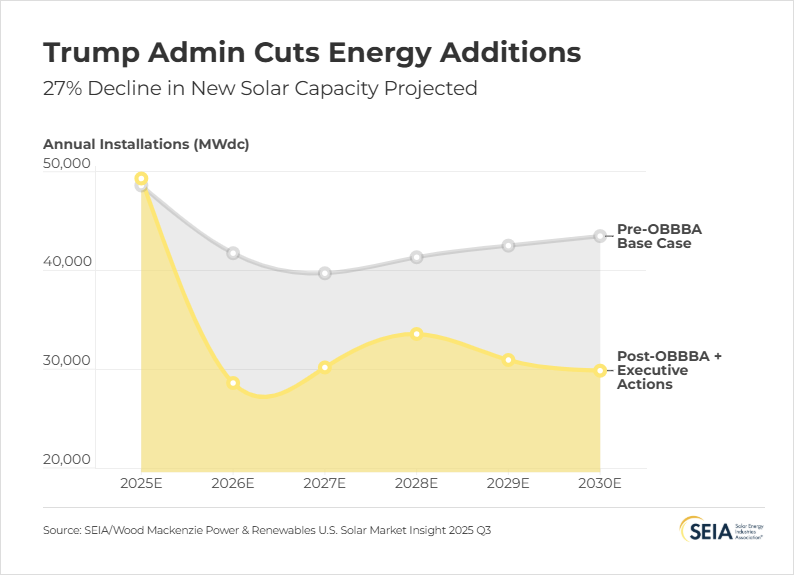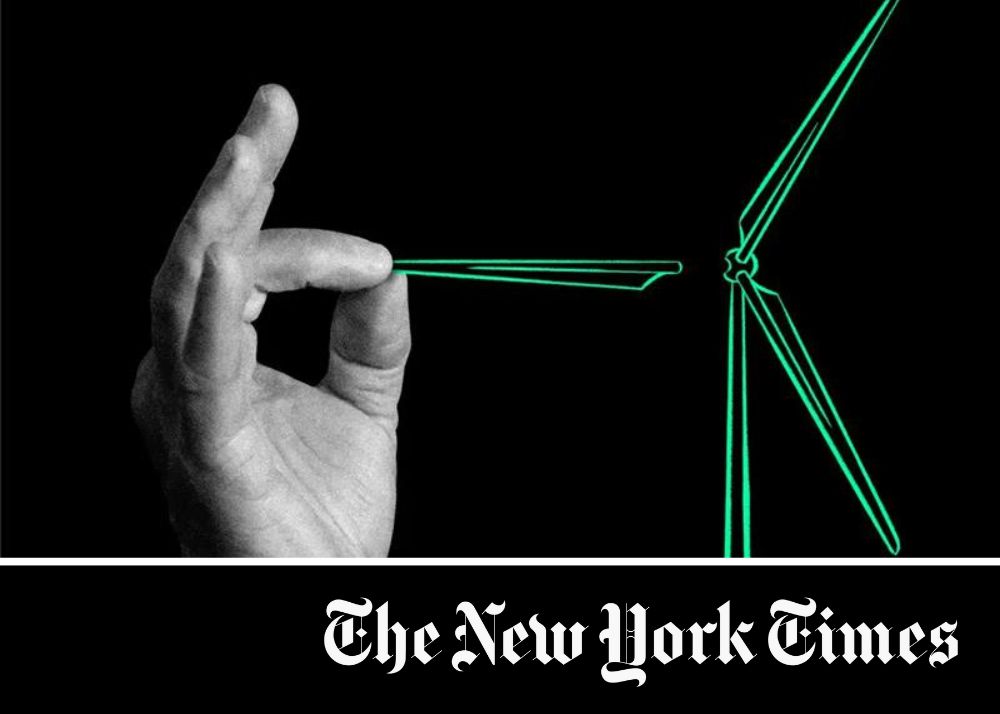while demand is rising...
American Energy is Under Threat
HALF of Planned U.S. Power Threatened by Political Attacks
while demand is rising...
American Energy is Under Threat
HALF of Planned U.S. Power Threatened by Political Attacks
Political attacks on America’s solar and storage industry are threatening over 500 projects totaling 117 gigawatts (GW) of capacity. These projects represent half of all new planned power capacity in the United States.
Solar power and storage are the quickest and most affordable way to add new power to the grid, representing 72% of new capacity in the pipeline.
Without this power, Americans’ electricity bills will spike, manufacturing will move overseas, and the United States will cede AI dominance to China.
Political attacks on America’s solar and storage industry are threatening over 500 projects totaling 117 gigawatts (GW) of capacity. These projects represent half of all new planned power capacity in the United States.
Solar power and storage are the quickest and most affordable way to add new power to the grid, representing 72% of new capacity in the pipeline.
Without this power, Americans’ electricity bills will spike, manufacturing will move overseas, and the United States will cede AI dominance to China.
The crisis in numbers
50%
of all electricity capacity planned through 2030 is at risk
117 GW
of solar and storage capacity across 519 projects is jeopardized
16 Million
American homes could be powered from at-risk projects
17 States
could lose over half of all their planned capacity
The crisis in numbers
50%
of all electricity capacity planned through 2030 is at risk
117 GW
of solar and storage capacity across 519 projects is jeopardized
16M
American homes could be powered from at-risk projects
17 states
could lose over half of all their planned capacity
Tell Washington to Let America’s Solar and Storage Industry Build
Tell Washington to Let America’s Solar and Storage Industry Build
The administration is using every tool at its disposal to slow down solar and storage projects. They’ve slowed federal permitting to a halt, developed standards that prioritize their preferred energy sources at the expense of your energy bill, cancelled grid upgrades, and injected uncertainty into the American energy markets at the worst possible time. Meanwhile, China built more renewable energy capacity in the first half of 2025 than the United States and the rest of the world combined.
Electricity demand from AI, data centers, and manufacturing is skyrocketing, and we need fast, affordable generation to meet this demand and help keep prices low. Solar power and storage are the quickest way to add new power at scale, accounting for 84% of new capacity last year and 72% of planned capacity buildout.
If the administration continues stalling projects and chilling new investments, Americans electric bills will keep spiking, and we will lose the AI race to China.
The administration is using every tool at its disposal to slow down solar and storage projects. They’ve slowed federal permitting to a halt, developed standards that prioritize their preferred energy sources at the expense of your energy bill, cancelled grid upgrades, and injected uncertainty into the American energy markets at the worst possible time. Meanwhile, China built more renewable energy capacity in the first half of 2025 than the United States and the rest of the world combined.
Electricity demand from AI, data centers, and manufacturing is skyrocketing, and we need fast, affordable generation to meet this demand and help keep prices low. Solar power and storage are the quickest way to add new power at scale, accounting for 84% of new capacity last year and 72% of planned capacity buildout.
If the administration continues stalling projects and chilling new investments, Americans electric bills will keep spiking, and we will lose the AI race to China.
What’s at risk in your state
What’s at risk in your state
Less Energy = Higher Prices
Right now, America needs a lot more electricity generation to meet demand and win the AI race. But cutting off largest sources of new electricity is creating a recipe for rising energy prices.
The price of electricity affects every other price in our economy. Food, clothing, housing and other important bills all rely on abundant, affordable electricity. When electricity prices go up, inflation across the nation beings to rise.
Contact your Representative and demand they tell the administration to stop slowing down solar and storage and raising electricity prices.
Less Energy = Higher Prices
Right now, America needs a lot more electricity generation to meet demand and win the AI race. But cutting off largest sources of new electricity is creating a recipe for rising energy prices.
The price of electricity affects every other price in our economy. Food, clothing, housing and other important bills all rely on abundant, affordable electricity. When electricity prices go up, inflation across the nation beings to rise.
Contact your Representative and demand they tell the administration to stop slowing down solar and storage and raising electricity prices.
Spotlight Stories
Anti-Solar Actions are Restricting Energy Supply; Right When the Grid Can Least Afford It
Solar and wind are now cheaper than coal in many places and sometimes cheaper than oil and gas. Clean energy sources help both hold down costs for Americans and prevent the United States from having to import so much foreign oil from countries hostile to our interests.
Spotlight Stories
Anti-Solar Actions are Restricting Energy Supply; Right When the Grid Can Least Afford It
Solar and wind are now cheaper than coal in many places and sometimes cheaper than oil and gas. Clean energy sources help both hold down costs for Americans and prevent the United States from having to import so much foreign oil from countries hostile to our interests.

Leading the Transformation to a Clean Energy Economy
Methodology
All data is sourced from the Energy Information Administration’s (EIA) Form 860M unless otherwise specified. Project count estimates were determined using unique plant ID codes, and single projects may include multiple generators with varying technology types, project statuses, and expected operation years. Projects deemed under threat are any projects which have not received all regulatory approvals as indicated by their status in the 860M data. All capacity data is in GWac or MWac. Planned projects with expected operation dates before 2026 or after 2030 were excluded from this analysis. Data and project statuses are current through October 2025.


